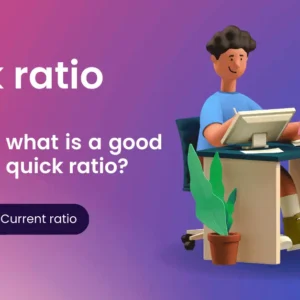What is the payback period?
The payback period is a capital budgeting method used to assess the time it takes to recoup the initial investment in an investment project. It represents the length of time required for the cumulative cash inflows to equal or exceeds the initial cash outflow. In other words, it measures the time it takes for an investment to “payback” its initial cost. The payback period is typically expressed in years or months.
It is a simple and intuitive metric that provides a quick assessment of the liquidity and risk associated with an investment. A shorter payback period indicates a quicker return on the initial investment and is generally considered more favorable. On the other hand, a longer payback period implies a slower recovery of the investment, which may pose higher risks and uncertainty.
While it is easy to calculate and understand, it does have limitations. It does not account for the time value of money or consider the profitability of cash flows beyond the payback period. Additionally, it does not provide a measure of the project’s overall profitability or the risk associated with the investment. Therefore, it is often used in combination with other financial metrics to make more informed investment decisions.
The formula for the payback period
The formula for calculating the payback period is relatively straightforward. It involves determining the time it takes for the cumulative cash inflows to equal or exceed the initial cash outflow. Here’s the formula for the payback period:
Payback Period = Initial Investment / Annual Cash Inflows
To calculate, follow these steps:
- Determine the initial investment required for the project.
- Identify the annual cash inflows generated by the project. These can be positive cash flows (revenues, profits) or negative cash flows (expenses, costs).
- Divide the initial investment by the annual cash inflows until the cumulative cash inflows equal or exceed the initial investment.
The result will give you, typically expressed in years or months. For example, if the initial investment is $100,000 and the annual cash inflows are $30,000, the payback period would be approximately 3.33 years ($100,000 / $30,000 = 3.33).
It’s important to note that the it does not account for the time value of money or consider cash flows beyond the period. It provides a basic measure of the time required to recover the initial investment but does not assess the project’s profitability or the risk associated with the investment. Therefore, it is often used in conjunction with other financial metrics for a more comprehensive evaluation.
Importance of payback period
Assessing Liquidity and Cash Flow Timing:
It provides insights into the liquidity of an investment project by indicating how quickly the initial investment can be recovered. It helps assess the project’s ability to generate positive cash flows and meet short-term financial obligations.
Evaluating Risk and Uncertainty:
A shorter payback period implies a quicker return on the initial investment, which can be perceived as lower risk. It allows investors to mitigate the uncertainty associated with longer-term projects by focusing on projects with faster payback periods.
Decision-Making Tool:
It serves as a simple and intuitive decision-making tool. It provides a clear and easily understandable measure of the time it takes to recoup the investment, helping stakeholders prioritize projects and allocate resources effectively.
Suitable for Short-Term Investment Analysis:
It is particularly useful for assessing short-term investment opportunities, where recovering the initial investment quickly is a priority. It is often utilized in industries with rapidly changing market conditions or when immediate returns are crucial.
Complements Other Financial Metrics:
While the payback period has its limitations, it complements other financial metrics like net present value (NPV) and internal rate of return (IRR). It offers a preliminary assessment of an investment’s feasibility, providing a quick indication of cash flow recovery before conducting a more comprehensive analysis.
Useful for Small Businesses and Startups:
Small businesses and startups often have limited resources and face a higher level of financial risk. The payback period helps these entities evaluate investments and determine if they align with their shorter-term financial goals and constraints.
Quick Comparison of Investment Options:
It allows for easy comparison between different investment options. By comparing the time it takes to recover the initial investment, stakeholders can make faster decisions about project selection and resource allocation.
While it offers valuable insights, it should be used in conjunction with other financial metrics and qualitative factors to make well-informed investment decisions. Its simplicity and focus on short-term cash flow recovery make it a valuable tool in the financial analysis toolkit.
A practical example
ABC Manufacturing is considering investing in a new production line. The initial investment required for the equipment and setup costs is $200,000. The company estimates that the project will generate annual cash inflows of $50,000 for the next six years.
To calculate the payback period, we need to determine the time it takes for the cumulative cash inflows to equal or exceed the initial investment.
- Year 1: Cumulative Cash Inflows = $50,000
- Year 2: Cumulative Cash Inflows = $100,000
- Year 3: Cumulative Cash Inflows = $150,000
- Year 4: Cumulative Cash Inflows = $200,000
By the end of Year 4, the cumulative cash inflows equal the initial investment of $200,000. Therefore, the payback period for this investment project is 4 years.
Interpretation: The payback period of 4 years indicates that it will take ABC Manufacturing 4 years to recover the initial investment of $200,000 through the annual cash inflows of $50,000. After the payback period, the project is expected to generate positive returns.
The payback period helps ABC Manufacturing assess the liquidity of the investment and determine how long it will take to recoup the initial investment. In this example, if the company has a predetermined payback period target of, let’s say, 3 years, they may consider the project to have a longer payback period and might evaluate its feasibility and potential risks more closely.
Interpreting the result
Shorter Payback Period:
A shorter period indicates that the initial investment will be recovered more quickly. It suggests that the project has a faster return on investment and can provide a faster recovery of funds for reinvestment or other purposes. Generally, a shorter payback period is considered more favorable, as it implies lower risk and a quicker return of capital.
Longer Payback Period:
A longer period suggests that it will take more time to recover the initial investment. It may indicate a slower return on investment and a higher level of risk and uncertainty. A longer payback period can be a concern for businesses with liquidity constraints or those seeking quicker returns.
Comparison with Target or Benchmark:
The period can be compared to a predetermined target or benchmark set by the company. If the actual payback period is shorter than the target, it may be seen as a positive outcome. Conversely, if the payback period exceeds the target, it may require a more thorough evaluation of the investment’s viability and potential risks.
Consideration of Cash Flow Patterns:
The period focuses on the timing of cash inflows and does not consider cash flows beyond the payback period. It is essential to consider the pattern of cash inflows and assess whether they align with the company’s financial objectives and requirements over time.
Complementary Metric:
It is a useful metric, but it has limitations. It does not account for the time value of money, profitability, or other qualitative factors. To make well-informed decisions, it is often used in conjunction with other financial metrics such as net present value (NPV) or internal rate of return (IRR).
In summary, It provides a straightforward interpretation of the time it takes to recover the initial investment. A shorter period is generally preferable, indicating a quicker return on investment. However, it is important to consider other financial metrics and qualitative factors to gain a comprehensive understanding of the investment’s feasibility, profitability, and risks.
Limitations of the payback period
Ignoring the Time Value of Money:
It does not account for the time value of money, which means it does not consider the fact that money received in the future is worth less than money received today. It treats all cash inflows equally, regardless of when they occur. This limitation can lead to inaccurate assessments of the project’s profitability and true value.
Disregarding Cash Flows Beyond the Payback Period:
It focuses solely on the time it takes to recover the initial investment and does not consider cash flows that occur beyond the payback period. It fails to account for the long-term profitability and potential benefits or drawbacks of the investment beyond the payback period.
Lack of Consideration for Project Size and Scale:
It does not consider the absolute values or the scale of the cash flows or the investment. Two projects with different sizes and investment amounts but the same payback period may have significantly different profitability levels. It fails to provide a comprehensive assessment of the project’s financial performance.
Limited to a Single Point of View:
It does not incorporate the concept of discounted cash flows or take into account the perspectives of different stakeholders. It may not adequately address the interests and objectives of all parties involved in the decision-making process.
Ignores Non-Monetary Factors:
It focuses solely on the financial aspect of the investment and disregards non-monetary factors that may be crucial for decision-making. It fails to consider qualitative factors such as strategic alignment, market potential, brand value, and environmental or social impacts, which can significantly influence the overall success and value of an investment.
Lack of Clear Acceptance Criteria:
It does not provide clear guidelines or acceptance criteria for evaluating the desirability of an investment. It does not specify whether a shorter or longer payback period is more favorable, leaving room for subjective interpretations and differing opinions.





[…] payback period is a capital budgeting technique that measures the time required to recover the initial investment […]